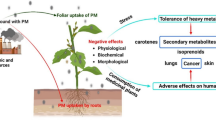Abstract
The present work aims to contribute for the elucidation of the role of oxidative stress in the toxicity associated with the exposure of Pichia kudriavzevii to multi-metals (Cd, Pb and Zn). Cells of the non-conventional yeast P. kudriavzevii exposed for 6 h to the action of multi-metals accumulated intracellular reactive oxygen species (ROS), evaluated through the oxidation of the probe 2′,7′-dichlorodihydrofluorescein diacetate. A progressive loss of membrane integrity (monitored using propidium iodide) was observed in multi-metal-treated cells. The triggering of intracellular ROS accumulation preceded the loss of membrane integrity. These results suggest that the disruption of membrane integrity can be attributed to the oxidative stress. The exposure of yeast cells to single metal showed that, under the concentrations tested, Pb was the metal responsible for the induction of the oxidative stress. Yeast cells coexposed to an antioxidant (ascorbic acid) and multi-metals did not accumulate intracellular ROS, but loss proliferation capacity. Together, the data obtained indicated that intracellular ROS accumulation contributed to metal toxicity, namely for the disruption of membrane integrity of the yeast P. kudriavzevii. It was proposed that Pb toxicity (the metal responsible for the toxic symptoms under the conditions tested) result from the combination of an ionic mechanism and the intracellular ROS accumulation.





Similar content being viewed by others
References
Arrigoni O, De Tullio MC (2002) Ascorbic acid: much more than just an antioxidant. Biochim Biophys Acta 1569:1–9
Avery SV (2001) Metal toxicity in yeasts and the role of oxidative stress. Adv Appl Microbiol 49:111–142
Avery SV (2011) Molecular targets of oxidative stress. Biochem J 434:201–210
Bartosz G (2009) Reactive oxygen species: destroyers or messengers? Biochem Pharmacol 77:1303–1315
Bussche JV, Soares EV (2011) Lead induces oxidative stress and phenotypic markers of apoptosis in Saccharomyces cerevisiae. Appl Microbiol Biotechnol 90:679–687
Chrestensen CA, Starke DW, Mieyal JJ (2000) Acute cadmium exposure inactivates thioltransferase (glutaredoxin), inhibits intracellular reduction of protein-glutathionyl-mixed disulfides, and initiates apoptosis. J Biol Chem 275:26556–26565
Fraústo da Silva JJR, Williams RJP (2001) The biological chemistry of the elements—the inorganic chemistry of life. Oxford University Press, Oxford
Gallarate M, Carlotti ME, Trotta M, Bovo S (1999) On the stability of ascorbic acid in emulsified systems for topical and cosmetic use. Int J Pharm 188:233–241
Garza A, Vega R, Soto E (2006) Cellular mechanisms of lead neurotoxicity. Med Sci Monitor 12:RA57–RA65
Herrero E, Ros J, Belli G, Cabiscol E (2008) Redox control and oxidative stress in yeast cells. Biochim Biophys Acta 1780:1217–1235
Howlett NG, Avery SV (1997) Induction of lipid peroxidation during heavy metal stress in Saccharomyces cerevisiae and influence of plasma membrane fatty acid unsaturation. Appl Environ Microbiol 63:2971–2976
IARC (2006) Inorganic and organic lead compounds, vol 87. International Agency for Research on Cancer (IARC), Lyon
IARC (2012) Arsenic, metals, fibres, and dusts-a review of human carcinogens, vol 100C. International Agency for Research on Cancer (IARC), Lyon
Jomova K, Valko M (2011) Advances in metal-induced oxidative stress and human disease. Toxicology 283:65–87
Li Y, Wang H, Wang H, Yin F, Yang X, Hu Y (2014) Heavy metal pollution in vegetables grown in the vicinity of a multi-metal mining area in Gejiu, China: total concentrations, speciation analysis, and health risk. Environ Sci Pollut Res 21:12569–12582
Liang QL, Zhou B (2007) Copper and manganese induce yeast apoptosis via different pathways. Mol Biol Cell 18:4741–4749
Machado MD, Soares EV, Soares HMVM (2010) Removal of heavy metals using a brewer’s yeast strain of Saccharomyces cerevisiae: application to the treatment of real electroplating effluents containing multielements. J Chem Technol Biotechnol 85:1353–1360
Mesquita VA, Machado MD, Silva CF, Soares EV (2015) Impact of multi-metals (Cd, Pb and Zn) exposure on the physiology of the yeast Pichia kudriavzevii. Environ Sci Pollut Res 22:11127–11136
Muthukumar K, Nachiappan V (2010) Cadmium-induced oxidative stress in Saccharomyces cerevisiae. Indian J Biochem Biophys 47:383–387
Nargund AM, Avery SV, Houghton JE (2008) Cadmium induces a heterogeneous and caspase-dependent apoptotic response in Saccharomyces cerevisiae. Apoptosis 13:811–821
Serero A, Lopes J, Nicolas A, Boiteux S (2008) Yeast genes involved in cadmium tolerance: identification of DNA replication as a target of cadmium toxicity. DNA Repair 7:1262–1275
Sousa CA, Soares EV (2014) Mitochondria are the main source and one of the targets of Pb (lead)-induced oxidative stress in the yeast Saccharomyces cerevisiae. Appl Microbiol Biotechnol 98:5153–5160
Stohs SJ, Bagchi D (1995) Oxidative mechanisms in the toxicity of metal ions. Free Radic Biol Med 18:321–336
Tarpey MM, Wink DA, Grisham MB (2004) Methods for detection of reactive metabolites of oxygen and nitrogen: in vitro and in vivo considerations. Am J Physiol-Regul Integr Comp Physiol 286:R431–R444
Wei JPJ, Srinivasan C, Han H, Valentine JS, Gralla EB (2001) Evidence for a novel role of copper-zinc superoxide dismutase in zinc metabolism. J Biol Chem 276:44798–44803
Wysocki R, Tamás MJ (2010) How Saccharomyces cerevisiae copes with toxic metals and metalloids. FEMS Microbiol Rev 34:925–951
Acknowledgments
The authors thank the FCT Strategic Project of UID/BIO/04469/2013 unit and the project RECI/BBB-EBI/0179/2012 (FCOMP-01-0124-FEDER-027462). Vanessa A. Mesquita gratefully acknowledges the grant from Coordenação de Aperfeiçoamento de Pessoal de Nível Superior (CAPES).
Author information
Authors and Affiliations
Corresponding author
Ethics declarations
Conflict of Interest
The authors declare that they have no conflict of interest.
Rights and permissions
About this article
Cite this article
Mesquita, V.A., Silva, C.F. & Soares, E.V. Toxicity Induced by a Metal Mixture (Cd, Pb and Zn) in the Yeast Pichia kudriavzevii: The Role of Oxidative Stress. Curr Microbiol 72, 545–550 (2016). https://doi.org/10.1007/s00284-016-0987-y
Received:
Accepted:
Published:
Issue Date:
DOI: https://doi.org/10.1007/s00284-016-0987-y




